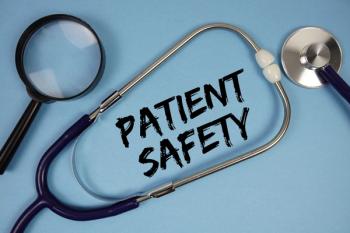
Community Pharmacies Are Safe, Accessible Locations for Adolescent Reproductive Health Care
Adolescents often are at higher risk of unwanted pregnancy, unsafe abortion, and sexually transmitted infections due to inadequate knowledge of protective practices.
In a review of 34 studies, investigators identified community pharmacies as safe and accessible locations for adolescents seeking care for sexual and reproductive health. Adolescents often face greater barriers to reproductive health care than adults, and community pharmacies are very accessible within urban and rural settings.1
Adolescents often are at higher risk of unwanted pregnancy, unsafe abortion, and sexually transmitted infections due to inadequate knowledge of protective practices, according to the World Health Organization (WHO). Furthermore, adolescent pregnancy can also be associated with higher risks of health issues, including anemia, postpartum hemorrhage, and mental disorders, including depression. WHO states that for sexual and reproductive health services for adolescents, “these are either not available or are provided in a way that makes adolescents feel unwelcome and embarrassed.”2
The investigators of the current study conducted a systematic review to examine adolescents’ experiences and acceptability of contraception and abortion clinical and dispensing services in community pharmacies. Due to a shift in the pharmacist’s scope of practice since 2000, eligible studies were those published from 2000 onward. Studies of any design were considered and included, or they focused on data on patients aged 10 to 19.
Investigators ultimately included 34 studies in the final analysis, with 24 from the US, 4 from the UK, 2 from Australia, and 1 each from Switzerland, Canada, and New Zealand. Of the studies, 21 focused on emergency contraceptive pills and 10 focused on broader contraceptive methods; 32 studies were considered high quality, with the other 2 being moderate quality.1
Investigators found that adolescents and pharmacists agreed that the delivery of contraceptive services for adolescents was accessible at the pharmacy level, and pharmacists were considered knowledgeable sources of information. Furthermore, adolescents viewed pharmacists as acceptable sources of information regarding contraception and preferred them as health care professionals for the information.
Pharmacies were seen as accessible and convenient for these services; however, adolescents did anticipate judgmental attitudes and were concerned about confidentiality, specifically related to the layout of the pharmacy. Pharmacists also identified lack of access to medical history as a potential reason that pharmacies were not suited for these services, and they identified needs for additional training regarding providing contraceptive information and counseling adolescents.1
However, investigators found that adolescents experienced embarrassment and pharmacist judgment that impacted their overall experience. They mentioned feeling embarrassed due to poor privacy, awkwardness when interacting with pharmacy staff, and judgment from pharmacy staff.1
Additionally, investigators noted that pharmacists’ and pharmacy staff’s attitudes toward providing contraception were influenced by their beliefs on contraception, as well as age and adolescent sexual activity. Empathetic care was identified as a factor in making adolescents feel more comfortable, which included approachability, awareness of stigma, nonjudgmental and respectful environments, and keeping a mindful tone and expression. Pharmacists also recognized the importance of respect and empathy.1
Investigators concluded that pharmacies were accessible and convenient sources for sexual and reproductive health care services, and pharmacists can provide adolescents with comprehensive information. The authors stated, “From the pharmacists’ perspective, their attitudes and comfort regarding adolescent sexual activity and contraception provision (including ECP [emergency contraceptive pill]), along with their need for further training, appeared to influence their acceptability to provide these services.”1
READ MORE:
Ready to impress your pharmacy colleagues with the latest drug information, industry trends, and patient care tips? Sign up today for our
REFERENCES
1. Stephenson J, Bailey JV, Blandford A, et al. An interactive website to aid young women's choice of contraception: feasibility and efficacy RCT. Health Technol Assess. 2020;24(56):1-44. doi:10.3310/hta24560
2. Adolescent sexual reproductive health. World Health Organization. Accessed August 14, 2025. https://www.who.int/southeastasia/activities/adolescent-sexual-reproductive-health
Newsletter
Pharmacy practice is always changing. Stay ahead of the curve with the Drug Topics newsletter and get the latest drug information, industry trends, and patient care tips.












































































































































